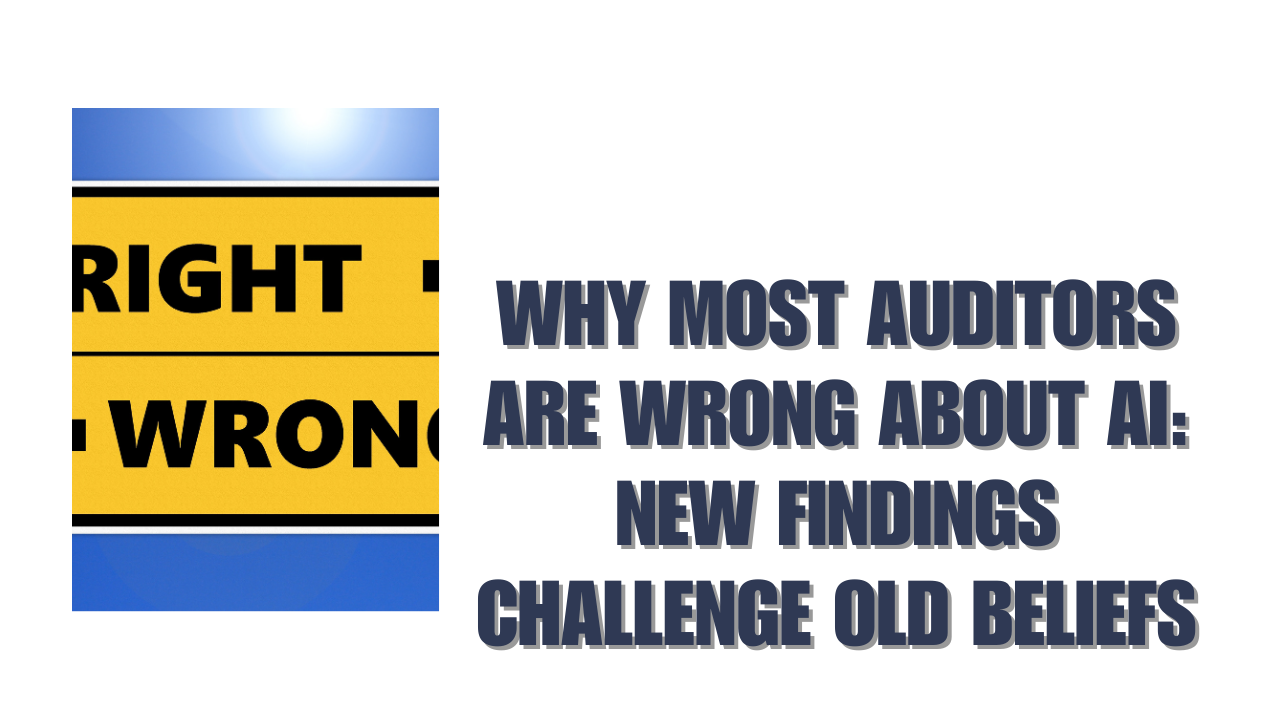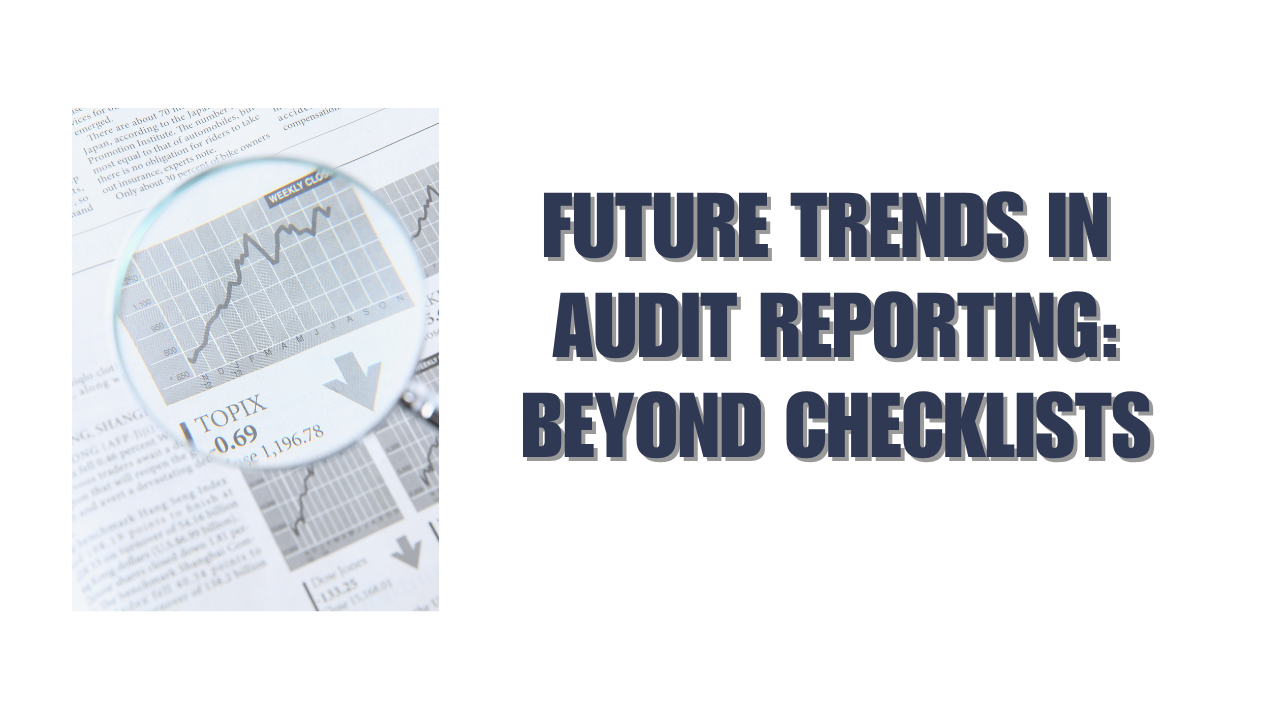AI has reshaped the scene of financial reporting in the last decade. The profession has moved from manual processes to tech-driven approaches. AI algorithms can quickly process huge amounts of financial data. They spot patterns, anomalies, and potential risks that traditional methods might miss. Yet most auditors don’t fully grasp what AI can really do.
The rapid growth of AI in auditing has brought major changes to the field. The evidence shows AI mostly automates specific tasks instead of replacing entire jobs. The biggest problems in building AI auditing frameworks come from several areas. These include transparency, explainability, AI bias, data privacy, and auditors relying too much on the technology. On top of that, RPA works more often with machine learning now. Many professionals wrongly think these technologies work in isolation.
This piece will get into why auditors often misread AI’s capabilities. We’ll look at new findings that question common beliefs about AI in the auditing profession. The discussion will cover how AI improves risk assessment and spots anomalies faster while speeding up data processing. We’ll also tackle the lack of real-world evidence about how AI adoption changes auditors’ views on making their workflow better.
Why Most Auditors Misunderstand AI Capabilities
Many auditing professionals blur the line between AI and other technologies, which creates substantial misconceptions about AI’s true capabilities. These misunderstandings stop firms from implementing AI auditing frameworks properly and create unrealistic expectations.
Confusion Between Automation and Artificial Intelligence
The auditing profession markets many tools as “AI” when they are just well-branded automation or analytics programs. This simple confusion stops auditors from assessing these technologies’ capabilities accurately. Organizations fail to see the difference between simple automation and genuine artificial intelligence capabilities, which results in improper technology implementation.
Marketing hype and insufficient technical literacy cause this confusion. Auditors often don’t understand the differences between robotic process automation (RPA), machine learning, and generative AI clearly. They might invest in solutions that don’t meet their actual needs or miss chances to use appropriate technologies for specific audit tasks.
Experts point out that auditors don’t recognize that AI automates specific tasks rather than entire jobs. This misunderstanding makes them either overestimate or underestimate AI’s effect on the profession.
Overestimating AI’s Decision-Making Abilities
Auditors often overestimate AI’s ability to make complex decisions that need professional judgment. AI excels at finding patterns and anomalies in large datasets but cannot match human skepticism, ethical reasoning, or contextual understanding.
Marcel Boersma of KPMG explains this difference: “The power of AI is to ‘give the most logical answer’ based on algorithms and data. Human intelligence is driven by analytical ability, creativity, intuition and emotion. These are unique qualities that artificial intelligence does not yet have”.
Research identifies five main sources that drive technical and human biases in AI systems: data deficiencies, demographic homogeneity, spurious correlations, improper comparators, and cognitive biases. These limitations affect AI’s decision-making capabilities, especially in complex audit scenarios that need nuanced judgment.
Enron’s scandal shows AI’s limitations clearly. One expert explains, “If you put it through AI, a machine might say, ‘yeah, they checked all the boxes in the rules.’ But when you stood back from it, as a human, this doesn’t make any business sense”. This shows why human oversight remains essential.
Misconceptions About AI Replacing Human Judgment
The most common misconception suggests that AI will eventually replace human auditors completely. Research shows that AI works best when it complements human expertise rather than replacing it.
The Institute of Internal Auditors’ (IIA) artificial intelligence auditing framework highlights this complementary relationship. Jeremy Sulzmann states that “accounting remains a relationship-based business, and computers cannot replace the deep connection and understanding trusted professionals have with their clients”.
Anastasia Priklonskaya of KPMG notes, “Whereas auditors used to spend time primarily collecting and analyzing data, their role will increasingly change to interpreting AI-generated insights, having conversations within organizations at many levels, and forming judgments based on these analyzes”.
This progress requires auditors to develop a hybrid skill set that combines AI literacy with uniquely human capabilities like professional skepticism, ethical judgment, and strategic foresight. Auditing’s future lies in creating effective human-AI cooperation that improves both efficiency and judgment.
What AI in Auditing Actually Looks Like Today
AI auditing applications today focus on automating specific tasks rather than replacing human judgment completely. Today’s AI tools serve as productivity boosters that help auditors process data more accurately, contrary to what many believe.
Use of Optical Character Recognition and Data Extraction
Natural Language Processing (NLP) and Optical Character Recognition (OCR) are the foundations of modern document processing in auditing. These technologies analyze text from financial documents of all types and convert them into structured digital formats for analysis.
OCR systems extract vital information from:
- Bank statements and financial reports
- Valuations, deeds, and lease agreements
- Invoices, receipts, and purchase orders
This technology lets auditors focus on complex analysis instead of tedious data entry. KPMG’s investments in boosted data acquisition techniques for structured and unstructured data shape future audit capabilities. OCR technology brings improved efficiency with greater precision in document processing.
Robotic Process Automation in Administrative Tasks
RPA stands as the most accessible AI technology in auditing today. RPA uses software “bots” that copy human actions to complete specific tasks defined by designers. RPA bots handle many administrative functions, including:
- Travel-related data entry and meeting scheduling
- Identifying items received from clients against request lists
- Processing expense reports and supporting documentation
Deloitte’s global RPA survey confirms that 53% of organizations had already adopted robotic process automation by 2020, and that widespread (near-universal) adoption was expected within five years.
Machine Learning for Anomaly Detection in Large Datasets
Machine learning for anomaly detection represents the most sophisticated current application of artificial intelligence in auditing. AI can analyze entire datasets and review 100% of financial transactions to identify patterns and outliers, unlike traditional sampling methods.
Modern anomaly detection systems identify three types of irregularities:
- Point anomalies: Individual data instances flagged via isolation forest and univariate methods like z-Score
- Contextual anomalies: Data instances anomalous in specific contexts but not otherwise
- Collective anomalies: Collections of related data instances considered anomalous compared to the entire dataset
This capability transforms auditors’ approach to risk identification. KPMG’s engagement team reviewed about 250 million transactions and found 60 outliers that needed investigation. BDO now blends automation technology into its Sales Match Analytics tool to review 100% of client sales transactions.
The Institute of Internal Auditors artificial intelligence auditing framework recognizes these technologies as essential for effective modern auditing. Boards now expect auditors to prioritize AI for anomaly and risk detection, with 73% support, which fundamentally changes how audit evidence gets gathered and reviewed.
The 5 Most Common Myths About AI in Auditing
Misconceptions about AI auditing continue to expand throughout the profession. Let’s get into the five most persistent myths that stop organizations from implementing AI solutions effectively.
Myth 1: AI Can Fully Replace Auditors
Many people believe AI will eventually eliminate human auditors. The reality looks quite different. We focused mainly on automating specific tasks rather than entire jobs. AI and human intelligence serve different purposes. AI excels at data analysis, while humans bring unique qualities like creativity, intuition, and emotional intelligence. KPMG makes this clear: “AI will never replace people and KPMG will always have human knowledge in the audit loop”. The audit profession builds trust, something AI cannot generate on its own.
Myth 2: AI Is Always Objective and Unbiased
People often assume AI systems provide objective, unbiased results naturally. These systems work only as well as their training data and programmed frameworks allow. Research points to five main sources of AI bias: data deficiencies, demographic homogeneity, spurious correlations, improper comparators, and cognitive biases. AI systems mirror historical data and include past biases and inequities. On top of that, it can produce “hallucinations”-results that sound plausible but need human verification.
Myth 3: AI Understands Context Like a Human
AI lacks genuine contextual understanding, unlike humans. Machines provide “the most logical answer” based on algorithms and data processing. They cannot copy human judgment, skepticism, or ethical reasoning. AI implementation faces challenges in data quality and system transparency. Human auditors play a crucial role in interpreting results, understanding implications, and making informed decisions from AI outputs.
Myth 4: AI Eliminates the Need for Sampling
AI lets us analyze entire datasets and might eliminate traditional sampling methods. This capability doesn’t automatically mean comprehensive audit coverage. Teams should apply the technology selectively where it adds maximum value. Complete data analysis brings new challenges about data quality and standardization, especially with different client systems and formats.
Myth 5: AI Is Ready for Full-Scale Audit Automation
A big gap exists between traditional auditing and fully AI-enabled auditing. Significant risks emerge when teams don’t monitor AI decisions properly. Auditors sometimes rely too heavily on these technologies without understanding their limits. Questions about liability for AI mistakes remain open. Auditors risk depending too much on AI-generated insights without proper professional skepticism. This approach could undermine auditing’s basic purpose.
New Findings That Challenge Traditional Beliefs
Recent research shows worrying gaps in how auditors use and confirm artificial intelligence tools. This challenges what we believed about AI’s reliability in the audit profession. These findings just need us to review current practices.
Auditor Overreliance on AI Tools Without Validation
Auditors face a growing risk of depending too much on AI-generated insights without enough professional skepticism. “Automation bias” happens when practitioners accept AI outputs without proper confirmation. This could weaken the main purpose of auditing. Deloitte points out that “AI-generated insights are carefully reviewed and validated by experienced auditors, who apply their professional skepticism and judgment to determine accuracy and completeness”. Many firms don’t add this vital human oversight component, which creates major quality risks.
Lack of Explainability in Complex AI Models
Complex AI systems create a “black-box” problem that affects audit transparency. AI models become harder to explain as their complexity grows. Research shows that “as an AI model’s predictive performance increases, the model’s explainability generally decreases”. This lack of clarity conflicts with audit documentation needs. “Existing standards regarding audit documentation and audit evidence imply that if auditors cannot explain and document the inner working or output of an AI model, they are restricted in how much reliance they can place on such tools”.
Data Privacy and Security Concerns in AI-Driven Audits
Traditional audit approaches don’t deal very well with unique security risks from AI systems. The main concerns include:
- Data poisoning attacks where cybercriminals manipulate training data
- Adversarial attacks that subtly modify input data to mislead AI models
- Privacy breaches related to sensitive financial information
Italy made history in early 2023 as the first Western country to temporarily block an advanced AI chatbot. This decision came from concerns about mass collection and storage of personal data, which shows increasing regulatory scrutiny.
Evidence from the Institute of Internal Auditors (IIA) AI Auditing Framework
The IIA’s updated Artificial Intelligence Auditing Framework reflects today’s digital world. The framework acknowledges that “AI can be a daunting topic for an internal auditor, especially as organizations’ AI adoption and use continue to grow”. Internal auditors now have a complete guide through four parts that help them understand risks and spot best practices for AI controls.
A newer study, published in 2024 by KPMG found that AI takes up about 10% of IT budgets today. Nearly half of the respondents expect a 25% rise in AI investment in 2025. This shows we need reliable auditing frameworks quickly. The study also revealed that 64% of companies want their auditors to review and give assurance over their AI controls. This marks a clear change in what companies expect from the audit profession.
What Auditors Need to Change in Their Approach
Auditors must completely change their approach to make good use of artificial intelligence. Traditional frameworks don’t work well in today’s fast-changing AI landscape.
Understanding the Limits of AI in Risk Assessment
We processed entire datasets instead of using risk-based sampling, which helps AI alleviate certain risk components. Black-box models that can’t explain their reasoning don’t fit risk assessment applications where finding justification matters most. Auditors need to confirm that AI lacks the ability to understand intent or organizational context.
Integrating Explainable AI (XAI) into Audit Workflows
Auditors need clear mechanisms to understand AI’s decision-making process. Research shows the biggest problems in AI tool development connect to transparency, explainability, bias, and data privacy. Strong governance should define which decisions AI can help with and which ones need human judgment.
Training Auditors on AI Literacy and Ethical Use
Digital trust professionals believe they’ll need more AI training within two years – about 85% of them. The IIA and ISACA are a great way to get specialized AI literacy training that focuses on combining audit methodology with AI capabilities. These programs should emphasize critical evaluation skills more than technical operation.
Adopting the IIA Artificial Intelligence Auditing Framework
The IIA’s updated artificial intelligence auditing framework gives well-laid-out guidance in four detailed parts. This framework helps auditors understand risks, spot best practices, and set up internal controls for AI.
Conclusion
Professionals in any discipline must address common myths about artificial intelligence in auditing right away. Many auditors mix up simple automation with true AI. They either expect too much from its decision-making or wrongly think it will take over human judgment completely. Of course, real AI implementation looks very different from what most people assume.
AI tools transform specific auditing tasks but don’t replace entire roles. Optical character recognition pulls vital information from documents and robotic process automation handles repetitive admin work. Machine learning spots anomalies across full datasets effectively. These tools boost what human auditors can do rather than make them less important.
New research challenges what we thought about AI reliability. The profession doesn’t deal very well with several problems. Auditors rely too much on AI without proper checks. Complex models lack clear explanations. Data privacy remains a major concern. The Institute of Internal Auditors’ new AI Auditing Framework tackles these issues while showing how to implement AI properly.
AI will change auditing – that’s inevitable. But success only comes when we are willing to see AI as a powerful tool in an auditor’s toolkit. It won’t replace professional skepticism, ethical reasoning, or understanding context. The audit profession faces a crucial moment. Its future depends on embracing AI’s benefits while knowing its limits.
FAQs
Q1. Will AI completely replace human auditors in the near future?
No, AI will not completely replace human auditors. While AI excels at automating specific tasks and analyzing large datasets, it cannot replicate human qualities such as professional skepticism, ethical reasoning, and contextual understanding. The future of auditing lies in effective human-AI collaboration, enhancing both efficiency and judgment.
Q2. How accurate and unbiased are AI systems in auditing?
AI systems are not inherently objective or unbiased. Their accuracy depends on the quality of training data and programmed frameworks. AI can mirror historical biases and produce “hallucinations” – plausible but incorrect results. Human oversight and validation remain crucial to ensure the reliability of AI-generated insights in auditing.
Q3. What are the current applications of AI in auditing?
Current AI applications in auditing include optical character recognition for data extraction, robotic process automation for administrative tasks, and machine learning for anomaly detection in large datasets. These technologies enhance auditors’ productivity and enable more comprehensive data analysis.
Q4. What challenges do auditors face when implementing AI?
Key challenges include the lack of explainability in complex AI models, data privacy and security concerns, and the risk of overreliance on AI-generated insights without proper validation. Auditors must also address the need for AI literacy and ethical use training to effectively leverage these technologies.






